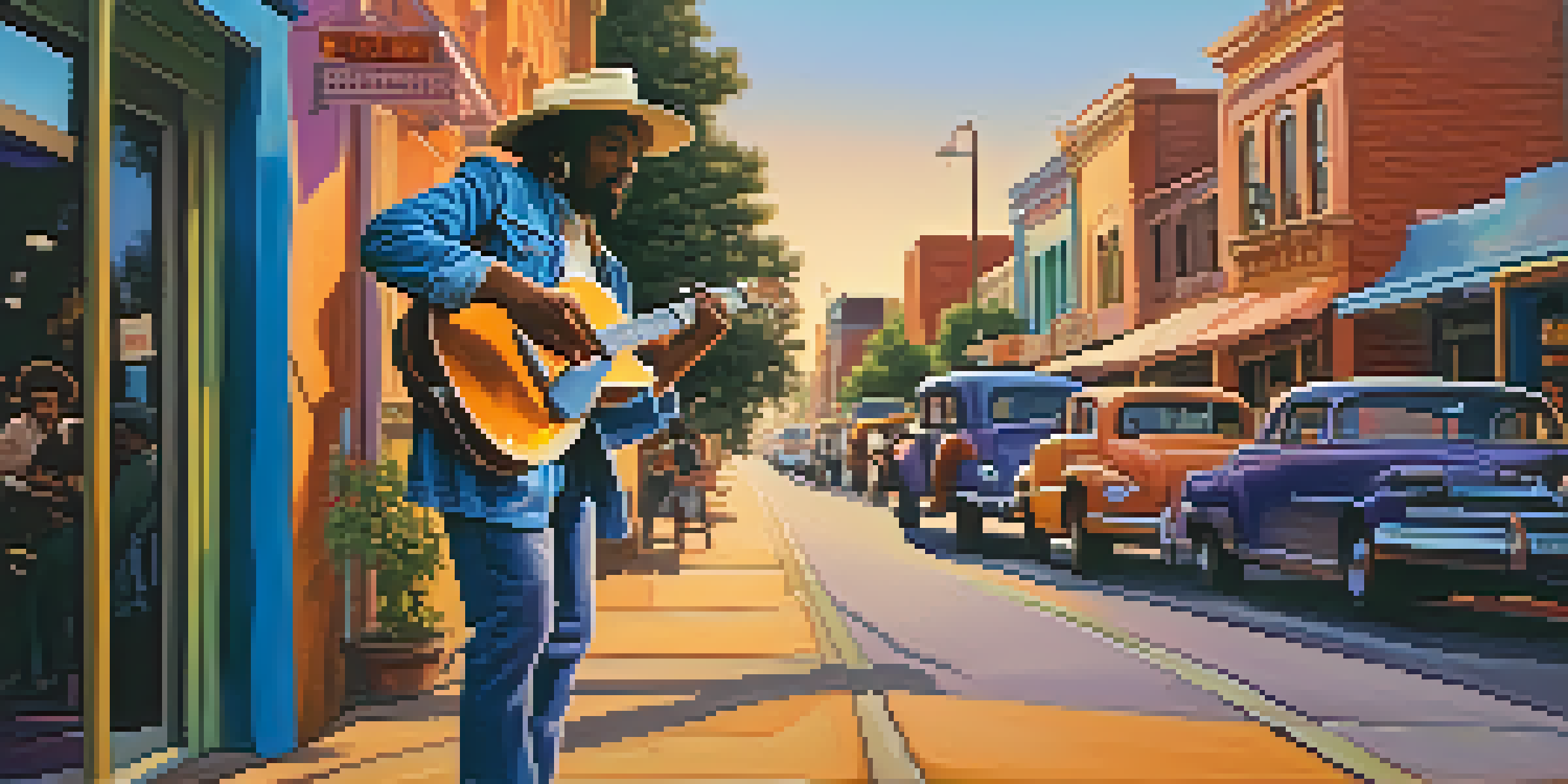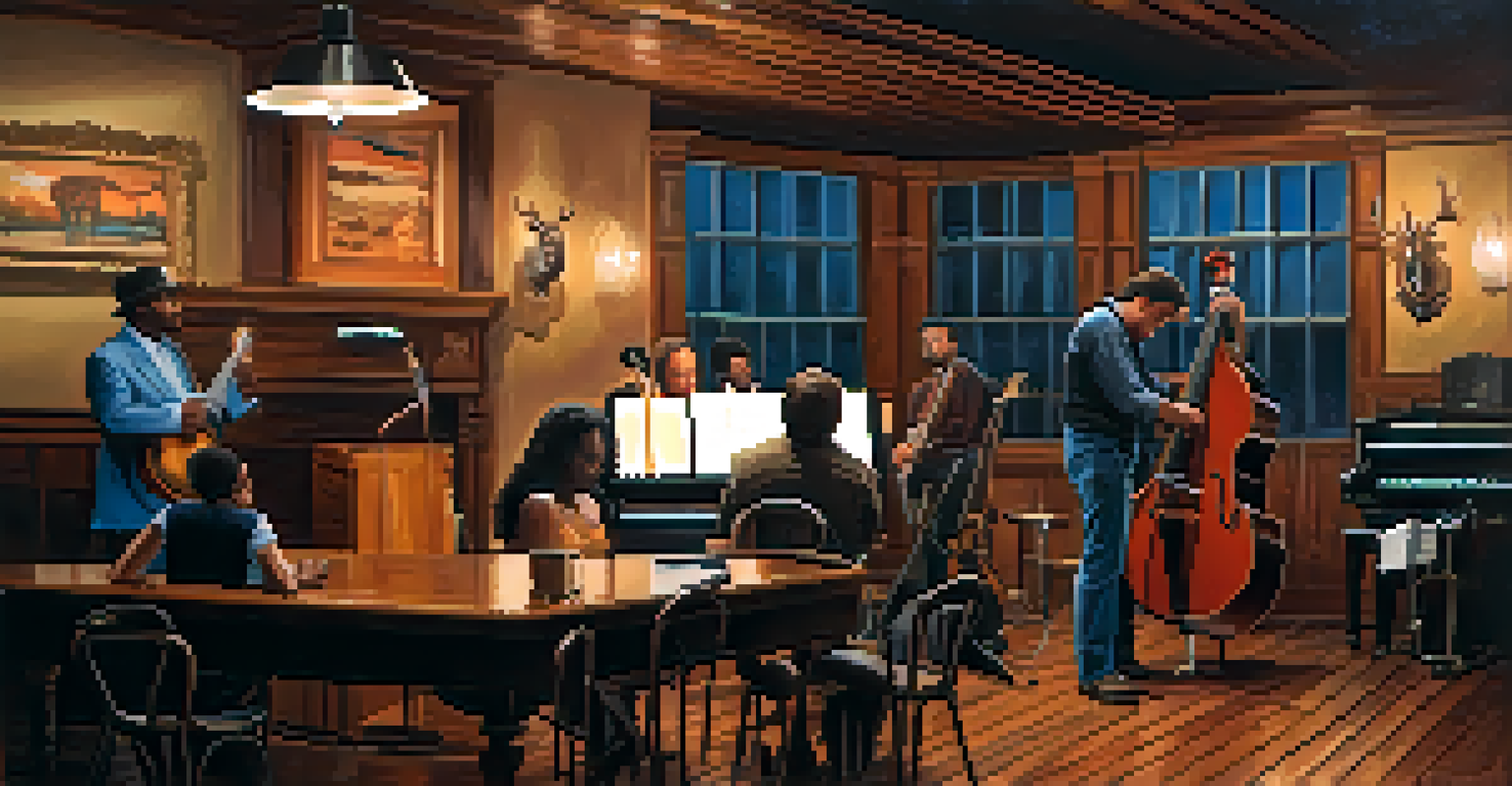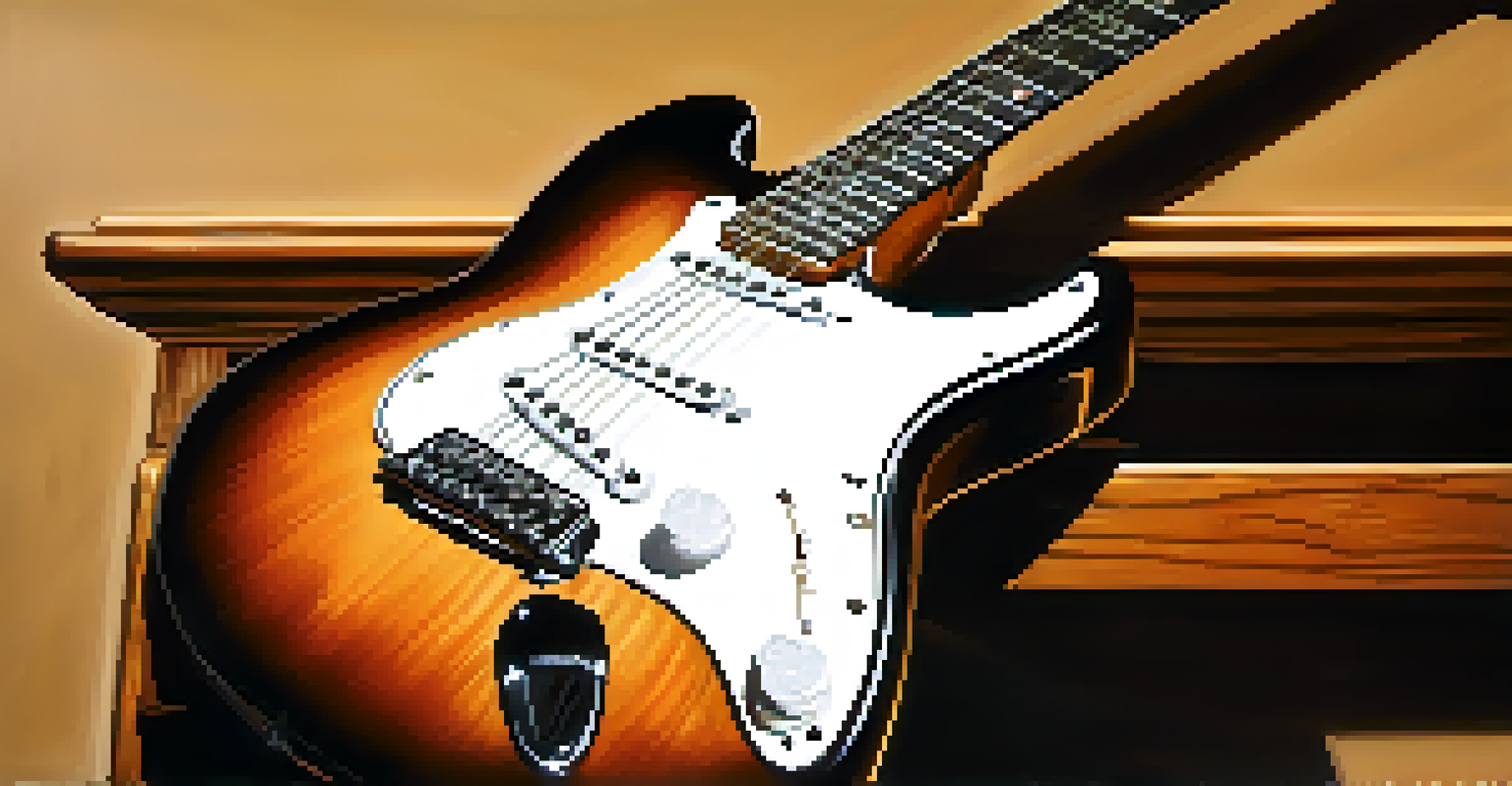Texas Blues Guitar: The Soulful Sound of American Music

The Origins of Texas Blues: A Musical Melting Pot
Texas Blues has deep roots that intertwine various musical styles, including Delta blues, jazz, and country. This eclectic mix reflects the diverse culture of Texas itself, where different communities have come together to create something truly unique. Artists like T-Bone Walker and Freddie King were pivotal in shaping this genre, drawing from their surroundings and experiences.
Blues is a very personal thing. It’s about life and death, love and loss, and the human condition.
The genre emerged in the early 20th century, with musicians often performing in local bars and juke joints. This grassroots approach allowed Texas Blues to develop organically, influenced by both African-American musical traditions and the broader American music scene. The use of electric guitars in the 1940s further transformed the sound, giving it a powerful edge that resonated with audiences.
As Texas Blues evolved, it began to gain national attention, especially during the 1960s blues revival. This period marked a significant turning point, as many Texas artists found their way into the mainstream, showcasing the soulful sound of the Lone Star State to a wider audience.
Key Instruments in Texas Blues Guitar: The Heartbeat of the Sound
At the core of Texas Blues is the electric guitar, which serves as the primary instrument for many artists. The expressive sound of the guitar, often enhanced with techniques like bending strings and using vibrato, creates an emotional depth that defines the genre. Guitars from brands like Fender and Gibson are particularly popular among Texas Blues musicians for their rich tones.

In addition to the electric guitar, other instruments such as harmonicas, pianos, and horns often complement the sound. This layering of instruments adds complexity and richness to the music, creating a full-bodied listening experience. The interplay between the guitar and these instruments can often evoke a wide range of emotions, from joy to sorrow.
Texas Blues: A Cultural Fusion
Texas Blues blends diverse musical styles, reflecting the rich cultural tapestry of Texas.
Moreover, the use of specific guitar techniques, such as fingerpicking and slide guitar, adds distinctive flavors to Texas Blues. These techniques not only showcase the guitarist's skill but also contribute to the genre's overall character, making each performance unique.
The Influential Artists of Texas Blues: Legends and Icons
Texas Blues has produced a remarkable lineup of artists who have left an indelible mark on the music world. Legends like Stevie Ray Vaughan brought a modern twist to the genre, combining rock and blues to create a sound that captivated millions. His passionate performances and technical mastery continue to inspire both musicians and fans alike.
The blues are the foundation of all music. They’re the roots of American music.
Another iconic figure is Johnny Winter, known for his high-energy performances and incredible guitar skills. Winter's ability to blend traditional blues with rock elements helped to broaden the appeal of Texas Blues, making it accessible to new audiences. His influence can still be felt in contemporary blues music today.
Additionally, artists like Lightnin' Hopkins and Buddy Guy have played crucial roles in shaping the Texas Blues landscape. Each of these musicians brought their own unique style and perspective, creating a rich tapestry of sounds that showcases the diversity within the genre.
The Characteristics of Texas Blues Guitar: What Sets It Apart
One of the defining characteristics of Texas Blues is its emphasis on storytelling. The lyrics often reflect personal experiences, struggles, and triumphs, resonating deeply with listeners. This narrative quality makes Texas Blues not just music, but a form of expression that connects artists to their audience.
Musically, Texas Blues is characterized by its strong rhythms and catchy melodies. The blend of swing and shuffle rhythms creates a groove that is irresistible, encouraging listeners to tap their feet or dance along. This infectious energy is a hallmark of many Texas Blues performances, making them memorable experiences.
Influential Legends Shape the Genre
Iconic artists like Stevie Ray Vaughan and Johnny Winter have significantly impacted the evolution of Texas Blues.
Moreover, the emotional intensity of the guitar solos is a standout feature. Guitarists often pour their hearts into their solos, using techniques that convey a wide range of emotions, from pain to elation. This connection between the musician and the instrument is what truly makes Texas Blues resonate with fans.
The Evolution of Texas Blues: From Past to Present
Over the decades, Texas Blues has continued to evolve, integrating new influences while staying true to its roots. The rise of the internet and digital platforms has allowed contemporary artists to reach wider audiences, breathing new life into the genre. Musicians today blend Texas Blues with elements of rock, jazz, and even hip-hop, creating innovative sounds.
Festivals dedicated to Texas Blues, such as the Austin Blues Festival, have also played a significant role in promoting both established and emerging artists. These events celebrate the genre's rich history while fostering a sense of community among musicians and fans. They serve as a platform for artists to showcase their talents and connect with audiences.
As more young musicians become interested in Texas Blues, the genre continues to thrive. With a new generation of artists eager to explore its depths and push boundaries, the future of Texas Blues looks promising, ensuring that this soulful sound remains a vital part of American music.
The Role of Texas Blues in American Culture: A Unifying Force
Texas Blues is more than just a genre; it's a cultural phenomenon that reflects the spirit of American life. The music often addresses themes of love, hardship, and resilience, resonating with listeners from all walks of life. This ability to connect on an emotional level makes Texas Blues an essential part of the American musical landscape.
Moreover, Texas Blues has played a crucial role in fostering community and solidarity among musicians and fans. Many artists collaborate across genres, blending styles and influences to create a richer sound. This spirit of collaboration strengthens the bonds within the music community and celebrates the diversity that defines Texas.
Emotional Storytelling in Lyrics
Texas Blues is characterized by its powerful storytelling, connecting deeply with listeners through personal experiences.
As Texas Blues continues to influence various musical styles, its impact can be seen across the globe. From rock and roll to country, the elements of Texas Blues can be found in countless songs, showcasing its lasting legacy as a foundational element of American music.
Learning to Play Texas Blues Guitar: A Journey of Expression
For aspiring musicians, learning to play Texas Blues guitar is a rewarding journey filled with self-expression and creativity. Beginners can start by mastering basic chords and progressions, gradually incorporating techniques like bending and sliding. This foundational knowledge allows them to explore the genre's rich emotional landscape.
As musicians advance, they can experiment with improvisation, a key element in Texas Blues. This process encourages players to develop their unique style and voice, making each performance a personal expression of their experiences. Jamming with others can also enhance this learning experience, providing valuable insights and inspiration.

Ultimately, playing Texas Blues guitar goes beyond technical skills; it's about conveying emotions and connecting with others. Whether performing on stage or playing in a living room, the essence of Texas Blues lies in its ability to resonate with both the artist and the audience, creating a shared moment of musical magic.